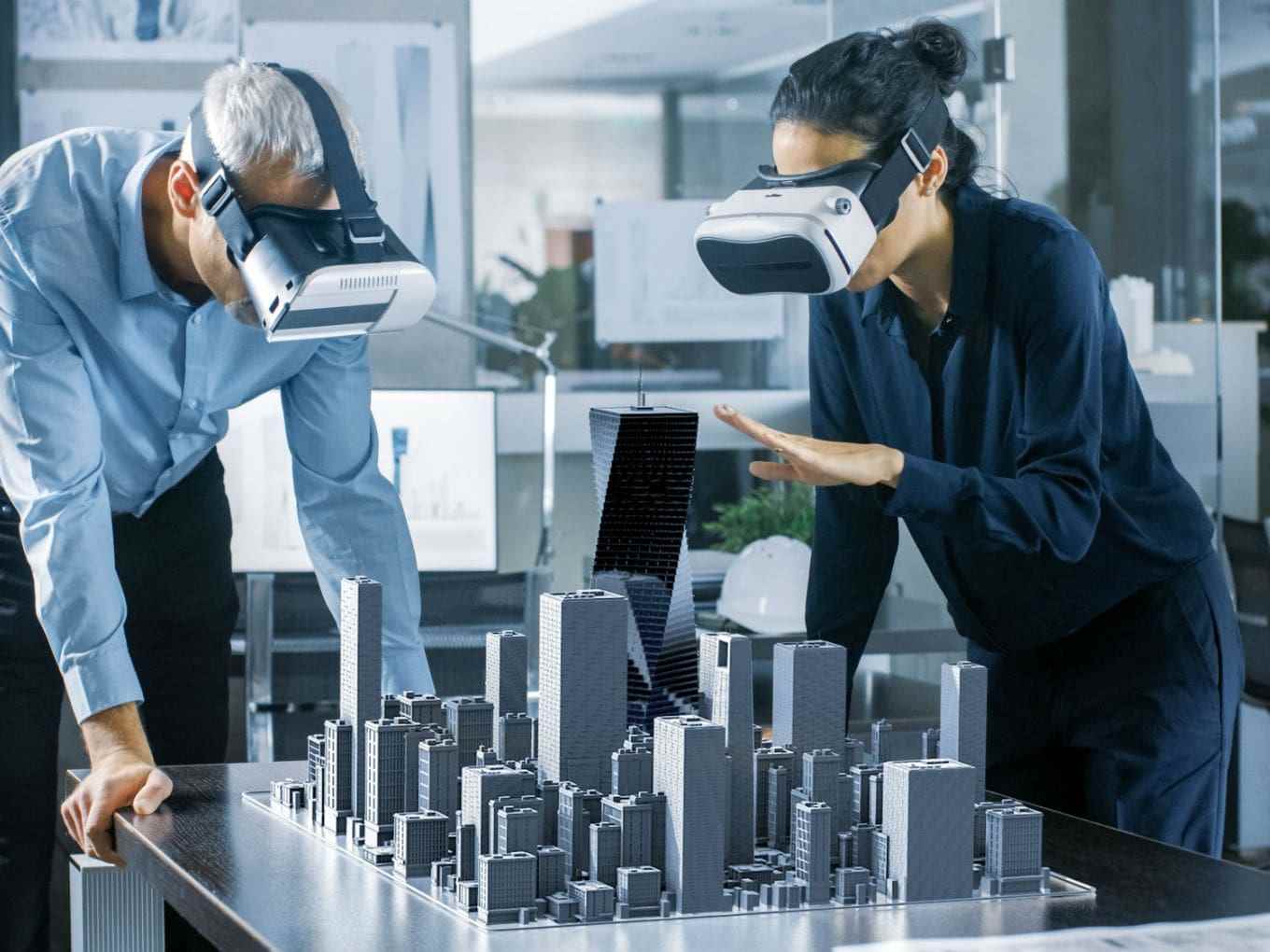Virtual Reality (VR) and Augmented Reality (AR) Industries For Investors
Investors who examine the sectors of Virtual Reality (VR) and Augmented Reality (AR) are placed at the front row of a technological revolution that is getting ready to reshape how we interact with the world. The VR market, characterized by engrossing experiences, is expanding rapidly with games, health, education and other applications. Wise investors attentively follow innovative steps that are done by institutions developing software solutions and high-technology VR hardware, as the demand for interesting digital and more realistic experiences increases.

On the other hand, Augmented Reality (AR) integrate digital content smoothly into the world, by this way it forms its position. Investors are affected by potentials in sectors such as industrial education, retail, and navigation of AR. The combination of VR and AR is expected to produce a mixed-reality environment with never-before-seen user experiences.
In this dynamic market, making tactical investments companies promote creating content, expansion of the market, and advancements in technology can have substantial returns. Entertainment, education and enterprise solutions in the universe of AR and VR intersect and also it displays an attractive image for investors who are looking for ways to ride the future wave.
What is Virtual Reality (VR)?

Virtual Reality (VR) is a fascinating technology that carries users in an artificially generated setting that copies sensory experience that appears remarkably actual. Using a combination of hardware and software, VR creates a simulated world that allows users to interact through special headsets and controllers.
The primary goal of Virtual Reality is to provide a feeling of existence by allowing users to feel as if they exist in a virtual area physically. This is acquired by observing the user’s movements and arranging the virtual area according to this.
VR finds itself in different application environments in several sectors from game and entertainment to healthcare, business and education. The intriguing nature of Virtual Reality facilitates therapeutic interventions, education simulations and even architectural visualization.
As technology advances, Virtual Reality experiences become more sophisticated with more realistic simulations, more improved graphic and tactual feedback, and also it increases general immersion. VR’s growing popularity reflects the desire for more interesting and more interactive digital experiences. Also, it shapes the way we perceive and communicate with the digital world.
What is Augmented Reality (AR)?

Augmented Reality (AR) is a transformative technology that brings digital information and virtual items together in real world environment. Contrary to Virtual Reality (VR), Augmented Reality (AR) instead of putting the users in a totally simulated world; improves available reality by blending the computer-generated content into the user’s circle of vision.
Augmented Reality has many kinds of applications from smartphone applications and smart glasses to head-up screeand in industrial and automobile applications. The main objective of Augmented Reality is to show context-relevant information in realtime to users and enrich their perception towards the world around them. Augmented Reality manages this by using cameras, sensors and other input devices to determine the user’s surroundings and replace digital components properly.
Augmented Reality technology has many fields of usage such as games, retail, navigation and healthcare services. Augmented Reality (AR) is becoming a centre of innovation and discovery in the technology sector as its potential to transform how we interact with information and the physical world gets more and more clear.
What are Virtual Reality (VR) and Augmented Reality (AR) For?

Augmented Reality (AR) and Virtual Reality (VR) serve transformative targets at equal levels but differently in enhancing our digital experiences. VR is designed to put the users into a world that is created by computers. Also, it offers a simulated reality that changes from fantastic worlds in games to realistic training simulations in fields like aerospace and medicine. By showing a unique sense of existence, it enables users to feel as if they step into an alternative world of reality.
In other respects, AR enriches real-world settings by adding digital information to it. This technology improves our daily experiences by showing tenderness to the context through devices smart glasses, smart phones and head-up monitors. AR find applications in retailing that allow customers to visualise the goods in their own spaces before buying the product and in navigation overlaying directions to the user’s sight.
Both VR and AR offer immersive and interactive learning and both are making major advancements in education. AR provides surgeons with real-time information during procedures, whereas VR is used for medical purposes for treatments and education in surgery. All in all, VR and AR make a revolution in the way we interact with the physical world and digital content by offering layers of understanding, engagement and innovation in numerous sectors.
How Can I Invest In Virtual Reality (VR) and Augmented Reality (AR)?
Investing in Virtual Reality (VR) and Augmented Reality (AR) includes strategic evaluations to benefit from dynamic growths in these sectors. One of these ways is to make investments in the companies that are placed at the front of the technology of VR and AR that embraces both hardware manufacturers and software developers. Specifying the key factors in the production of innovative software solutions, AR glasses or VR headsets enables a basis for a diversified investment portfolio.
Moreover, focusing on the companies that contribute to the ecosystem such as graphics processing units (GPUs), being an expert in semiconductor production and sensors provides exposure to more diverse technological progresses that fuel VR and AR.
Another strategy is to look at invested funds and exchange-traded funds (ETFs) that are devoted to the technology industry since they frequently contain firms that are developing VR and AR. Being informed about new-emerged initiatives in VR and AR may offer a chance for early-stage investments to have significant growth potential.
As the market grows, following mergers, purchases and partnerships may offer precious information about potential investment opportunities. Furthermore, considering the wider effects of VR and AR in variable sectors such as education, healthcare and entertainment may lead investments in companies that have different applications.
0However, as in each investment, in order to make conscious decisions in the evolving atmosphere of VR and AR investments, following technological advancements and understanding market tendencies are crucial.
Furthermore, investigating potential investments in VR and AR necessitates evaluating the regulatory environment and remaining aware of changes in consumer behaviour. As technology evolves, analysing patent applications and rights of intellectual rights may reveal information about how businesses are positioned against one another in their specific fields.
See you in the next post,
Anil UZUN